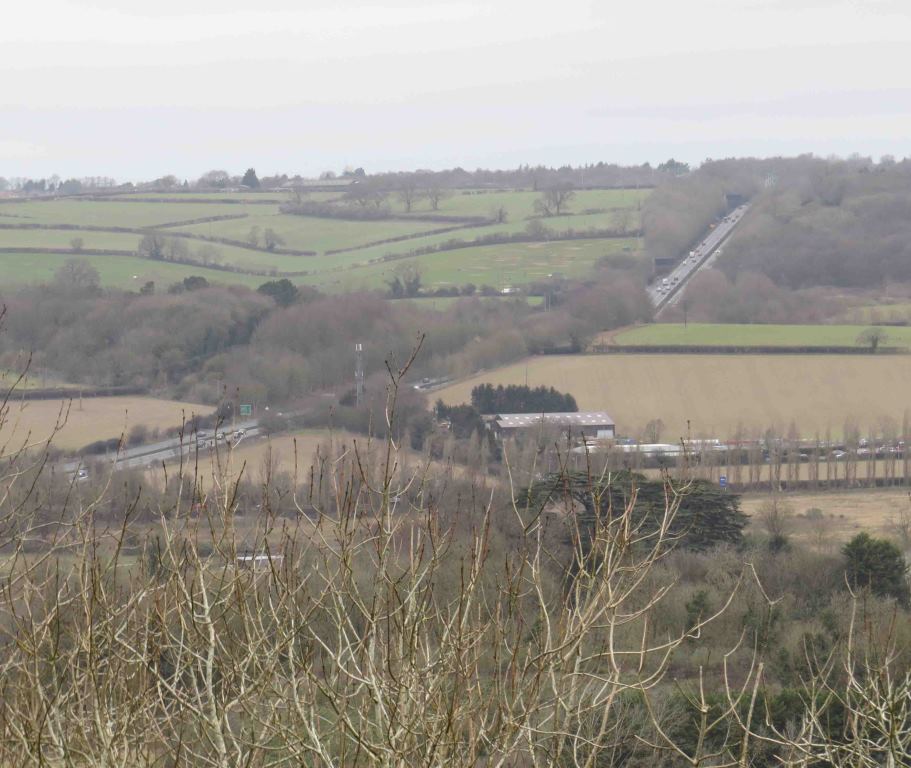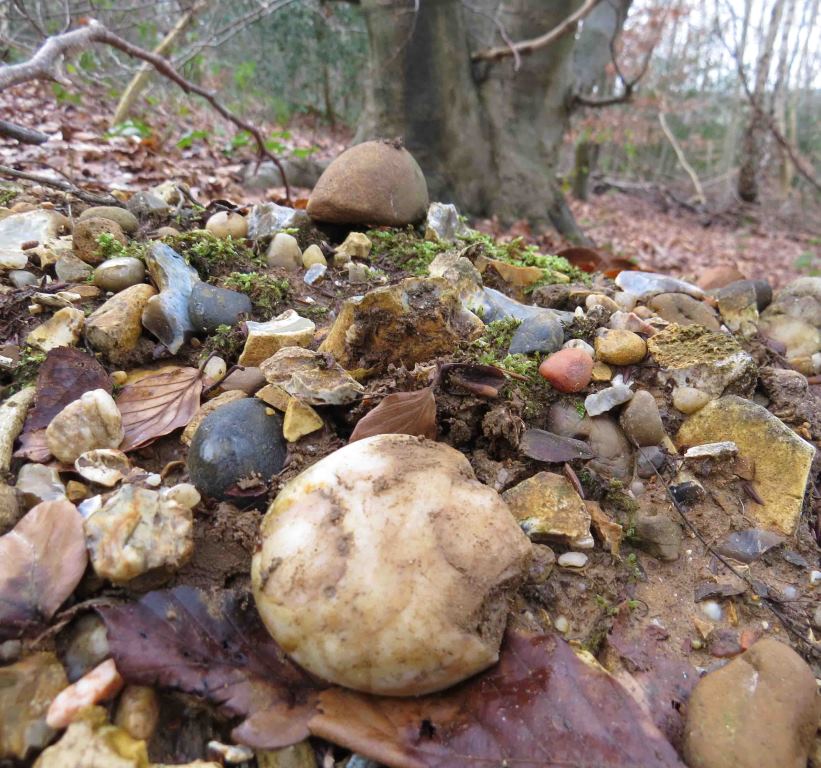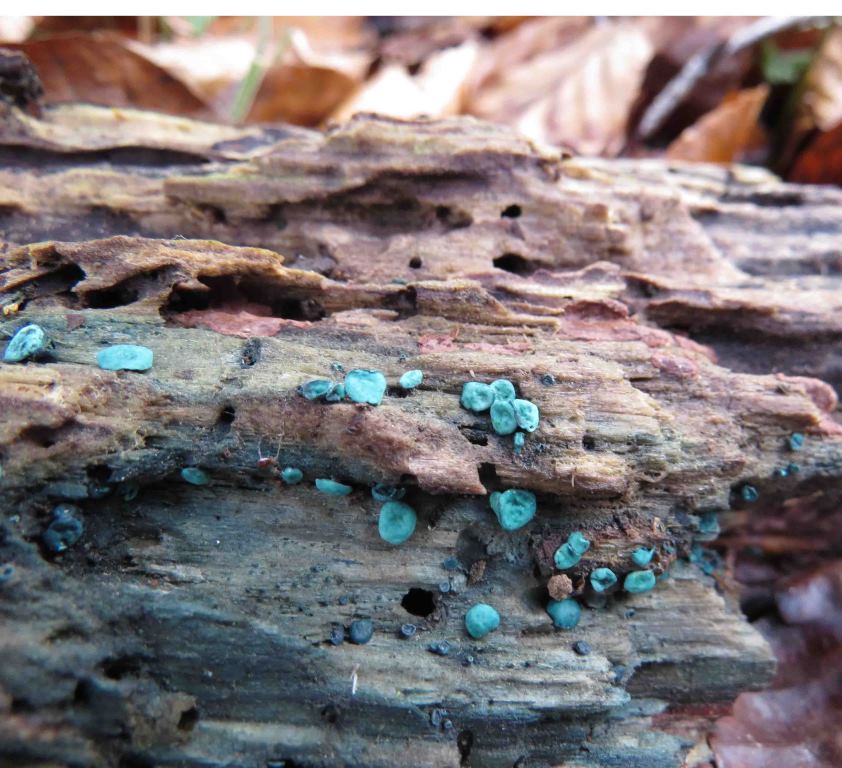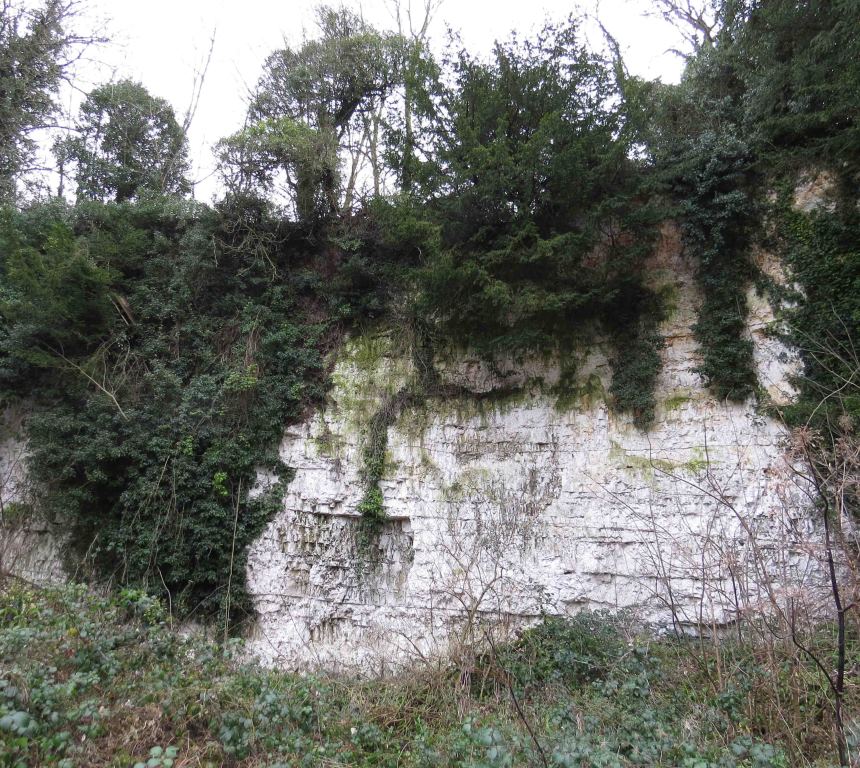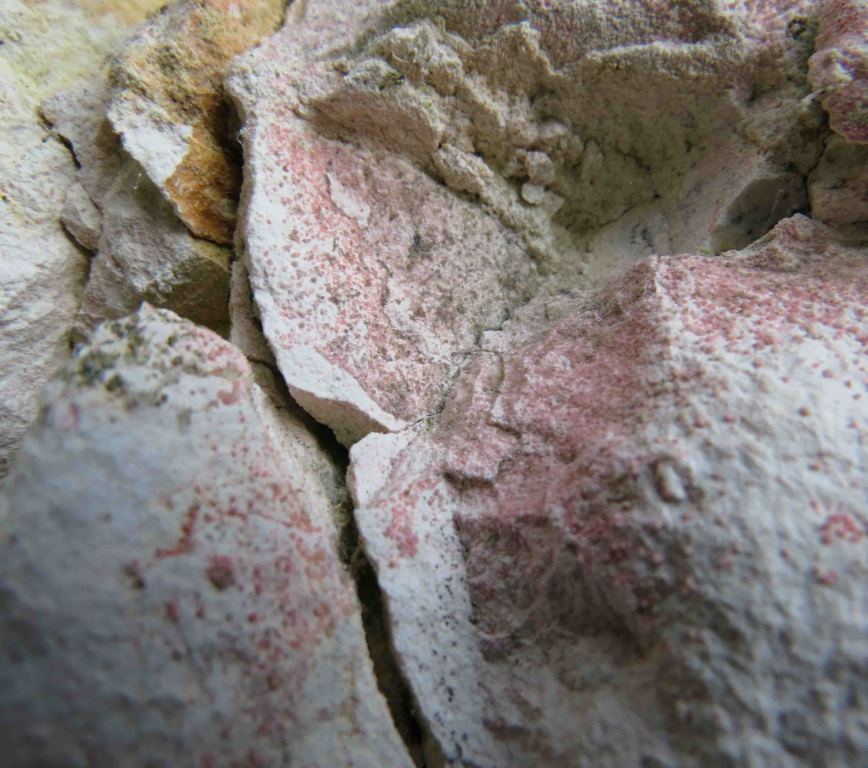Julia Cooper stepped into the breach on Saturday 11 January 2020, when the original leader of the geology walk, Lesley Dunlop, was called away on urgent family business. Armed with Lesley’s map and notes and the Berkshire Geoconservation Group’s ‘Geological Sites to Visit in Berkshire’ booklet, Julia led 14 members on a walk around Winter Hill and Cookham Dean on a mild grey morning. While the group gathered, a mixed flock of Redwings and Fieldfares landed briefly in the trees below, before flying on. Looking north across the valley of the Thames from the Winter Hill viewpoint, a series of gravel terraces could be seen on the far side. The oldest and highest terrace, the Winter Hill gravel, was laid down about 500,000 years ago. Lower down, the Taplow and Shepperton terraces could be seen, with the most recent deposits laid down between 20,000 and 100,000 years ago. The gravel terraces were laid down by braided river systems in the warmer interludes between ice ages. During the colder phases, sea level fell and the river cut downwards through the Chalk bedrock. Changes in gradient of the A404 dual carriageway on the far side of the valley mark out the succession of terraces. The next section of the walk followed a footpath to the Woodland Trust’s Quarry Wood. Hazel catkins were fully out and a Song Thrush was singing. Quarry Wood has deposits of Gerrard’s Cross gravel, laid down more than 500,000 years ago. The oldest gravel deposits include pebbles of Quartz and Quartzite, originating from a time when the Thames catchment area included parts of the Midlands. These were easily found in places where the gravel was exposed, such as round the roots of fallen trees. Far below, Marlow church could be seen, built on a terrace just above the present floodplain. Other interesting sightings in the wood included a branch of rotting wood which was stained blue-green by the Green Elfcup fungus and an unusual growth of the Turkeytail fungus on a fallen twig. While the twig was still in the tree, the lower surface of the Turkeytail was pointing downwards. When the twig fell at an angle, the Turkeytail responded by growing a rosette of smaller fungi, all growing with the lower surface pointing in the new downwards direction. The walk then continued down a narrow lane to Cookham Dean Chalk Pit. The Seaford Nodular Chalk was laid down about 85 million years ago in the Cretaceous period. The Chalk was made from the bodies of tiny coccolithophores deposited in warm tropical seas and it has been estimated that it took about 1000 years to deposit a thickness of 10cm. The quarry face has narrow bands of flints at intervals of about 0.5 – 1 metre. These represent changes in seawater chemistry when more siliceous organisms such as sponges were deposited. The quarry also has small patches of pink material, known as Phosphatic Chalk. The next part of the walk was through the village, then along a footpath which climbed from the Chalk up a slope which was capped with Winter Hill gravel. On the final stretch back to the Winter Hill viewpoint, Stinking Hellebore flowers were noted in the woodland below the road.
Pictures by Fiona Brown

